TGS Aftermath
We recap the events of TGS and of a visit to some of Tokyo's more game-centric neighborhoods, with an editors' choice round-up, a photo gallery, and more!
Tokyo Game Show 2005, held from September 16 to 18, brought the latest in gaming news, movies, and demos to gamers and gaming press from all over the world.
This year the show's focus was split between the current generation of game systems, with what seemed to be an emphasis on the recently released portables the Sony PSP and the Nintendo DS, and the next generation of game systems, which includes the Microsoft Xbox 360, the Sony PlayStation 3, and the Nintendo Revolution. Although there were a fair number of games for the Sony PlayStation 2 and the Nintendo GameCube, the Microsoft Xbox made almost no appearance whatsoever.
The conference kicked off with a Microsoft press event and then two keynote addresses, one from Robbie Bach, Microsoft's chief Xbox officer, and the other from Satoru Iwata, president of Nintendo. Typically Nintendo doesn't appear at the Tokyo Game Show with first-party information at all, because it's always held its own event: SpaceWorld. However, with no SpaceWorld scheduled this year, Nintendo took the opportunity to show up at TGS to unveil the Revolution's controller. The first day of the show was open to game industry and press only, but the following two days were made available to the public for the low price of 1,200 yen a day (around $10).
The following pages recap some of the highlights of the Tokyo Game Show 2005, from the biggest news and trailers, to the editors' favorite demos and trailers on the show floor. Read on to discover two different perspectives on the Japanese version of Final Fantasy: Advent Children, a photo gallery guaranteed to have lots of cosplayers in it, what makes Japanese cell phones so much cooler than ours, and more.
If you missed anything from this year's Tokyo Game Show, be sure to check out
The Big Stories
Metal Gear Solid 4: Guns of the Patriots Trailer Impressions
"After the little first-person fake-out, the trailer fully reveals Snake, still wearing his classic sneaking suit but deeply lined, grizzled, and even sporting gray hair and a rough-looking moustache. He's also got some kind of wicked-looking future eye patch. Shades of Big Boss? At least the mullet is intact." -Brad Shoemaker
Miyamoto unveils Nintendo's Revolution controller
"The form factor on display wasn't the absolute final design for the Revolution controller, and Nintendo reps noted that it is still a work in progress. That said, it was enough to give us an idea of where the company is headed. The controller itself bears no resemblance to the myriad fan-generated renderings purporting to be the real deal. The unit basically looks like a slim, ergonomic television remote that's about as long as your hand." -Ricardo Torres
Devil May Cry 4 Trailer Impressions
"If the latest trailer is any indication, Dante, Capcom's white-haired demon hunter, is the same as he ever was. Although what we saw at TGS this year doesn't reveal very much about the latest installment in the DMC series, it did provide some relatively impressive eye candy." -Carrie Gouskos
"The game's humor is also thankfully quite intact, and some characters, such as the monkey, Abu, provide constant comic relief throughout. Essentially, it looks like the Kingdom Hearts franchise is prospering with Kingdom Hearts 2, which is capitalizing on the success of the first game while still contributing new innovations to the series." -Carrie Gouskos
Full Japanese PlayStation 3 lineup revealed
"The list revealed a massive amount of third-party support for the console, which is sure to heat up the next-generation console war with Microsoft's Xbox 360. Sony currently has 102 games scheduled or already in development for the PS3, with 71 publishers on board its next-gen bandwagon." -Hirohiko Niizumi/Tor Thorsen
Xbox 360 launching November 22
"Now it appears that Microsoft will make its pre-Turkey Day mandate...barely. In its pre-Tokyo Game Show conference on Thursday afternoon, Microsoft announced that it is shipping the Xbox 360 in North America on Tuesday, November 22, two days before Thanksgiving. The company also said the console is already being manufactured en masse, with 'state-of-the-art facilities producing millions of units.'" -Tor Thorsen/Justin Calvert
"Gears of War doesn't seem at all like a typical run-and-gun shooter. Rather, you'll have to rely heavily on cover so you don't get wasted out in the open--you know, kind of like real armed skirmishes. Each level will have tons of cover points that you can attach your character to. These include just about any flat surface, from a low-barrier wall to the rusting frame of a car." -Brad Shoemaker
Dead or Alive 4 Updated Hands-On
"As impressed as we were by the clarity and detail in the visuals the last time we saw DOA4, the latest version of the game was looking even better. The characters featured smoother animation, an impressive level of detail, and, in the case of the female characters, free-flowing hair that, while still a little rough in spots, is looking good." -Ricardo Torres
"Though no actual gameplay of Blue Dragon was shown, what we saw during the technical demonstration certainly indicates a positive direction for the project. The game will also feature a soundtrack by RPG composing legend Nobuo Uematsu (and if we'd gotten to hear any of his new music, we'd have told you about it already). In fact, Blue Dragon represents a reunion of sorts, since Sakaguchi, Uematsu, and Toriyama all worked together previously on the Super NES RPG Chrono Trigger." -Brad Shoemaker
Editors' Choice
Metal Gear Solid 4: Guns of the Patriots
"We don't need to tell you that Guns of the Patriots looks utterly incredible--the screenshots certainly speak for themselves--and unlike what we can say about some other PS3 games shown back at the Electronic Entertainment Expo, we can say with confidence that enough aliasing and pixelated textures were evident in this trailer to indicate that it was running smoothly in real time, and further live demonstrations from Kojima on the show floor at TGS confirm this to be the cast. Given that, this is pretty much one of the best-looking games we've ever seen." -Brad Shoemaker
"Everything about this game is charming, from the bright graphics and environments adorned with polka dots, to the cute little grunts and pops that the character makes when he bobs around. The music, which is on a fairly short cycle, is so catchy that you probably won't find it annoying, even if you should. And the gameplay, which is so simple, is surprisingly rich, with all the hidden areas and pickups that you can find along the way. It's hard to find fault with what we saw from this game so far, except to say that it doesn't currently have a North American release date." -Carrie Gouskos
"One of the first games that we checked out on day one of the Tokyo Game Show was Dead Rising--a zombie-filled action game that we saw in video form at a pre-E3 event earlier this year. Capcom has a playable demo of the game in an adults-only area of its booth, and although we were able to spend only about 10 minutes with it, those were 10 of the most viscerally satisfying minutes that we've spent in Tokyo thus far." -Justin Calvert
"Mega Man's head size is the first thing you'll notice about the graphics in Rockman Rockman. Everything has been redone in a wiggly sort of polygonal anime style that's meant to give the game a vibrant, cartoony vibe. The look works surprisingly well, and little touches, like the way Cutman appears and chops a log in half with his head right before you fight him, really give the game a great deal of personality and charm." -Jeff Gerstmann
"Rogue Galaxy is a visual leap above Dark Cloud 2, taking that game's cel-shaded charm and enriching it. Characters in Rogue Galaxy lack the thick, somewhat jagged outlines found in other games; they're very smooth and very well animated, as well as shaded to give them great nuance and depth. Designs sport detail from buccaneer chic to bold tribal wear, lending each character lots of personality." -Bethany Massimilla
"Project Gotham Racing 3 promises to improve upon its popular predecessor through the addition of numerous new modes, more realistic gameplay, and, of course, much-improved visuals. The first thing we got to see during our demonstration was the game's main menu screen, which includes Gotham career, playtime, and Gotham TV options--all of which we got to see in action." -Justin Calvert
"You'll need to get comfortable with all three formations as you make your way through the game--even in the demo we had to do some multitasking and bot-configuring to progress. The game will force you to use your brain through the adventure--you'll have to solve puzzles and suss out which robot configuration will be the most useful to Bolt. Based on what we played, Tokobot is shaping up well. It offers a breezy experience that's fun and smart." -Ricardo Torres
"It only took the five-minute duration of the Gears of War demo to convince us that the game's explosive combat will more than likely live up to its lavish visuals. The demo version was running reasonably well, with a frame rate hovering at and occasionally below the 30 mark. But the game is purportedly running on only one of the Xbox 360 CPU's three cores, and Epic claims it should at least double that performance number by the time emergence day rolls around, sometime next year." -Brad Shoemaker
"Besides looking cool, the effect offers a visual cue that will likely be an important aspect of combat. The frame rate continued to improve over our last look and was a solid 60 frames per second almost all the time now. Beyond the improvements in the visuals in the core game, the lobby system has seen some significant improvements with more detail, the inclusion of a TV as we mentioned, and the addition of more animation for the various avatars." -Ricardo Torres
Cosplay, Metal Gear mania, and a lot of gamers. It's the Tokyo Game Show, and it's giving E3 some competition.
This year's Tokyo Game Show took place in the suburbs of Tokyo from September 16-18. The event is considered to be the industry's second-biggest convention, behind the Electronic Entertainment Expo (E3) held in Los Angeles. Like E3, several companies use the event to reveal some of their biggest announcements, like the release date of the Microsoft Xbox 360 or the first footage of Metal Gear Solid 4 on the PlayStation 3.
Unlike E3, the TGS is open to the public on days two and three, opening the door for some wacky characters. The floor is lined with people dressed up in game-related garb, but these costumed bodies aren't paid hourglass-shaped models. They're regular people, and they actually voluntarily wear these getups...for fun. The spectacle is akin to E3's Kentia Hall, but it isn't cast off into the depths of a convention center...it's all right there in the main hall, out front, and everywhere in between.
If you think this sounds like perfect fodder for another GameSpot photoshoot, give yourself a gold star. Check out the gallery.
The hottest PSP application to hit the shelves last week in Japan was not a game at all. Rather, it was the ode to gaming known as Final Fantasy VII: Advent Children. We got our grubby hands on a UMD copy of the film, and even though it was entirely in Japanese, with no option for English subtitles, we didn't need text to tell what this movie was about. It's clearly a tribute to Final Fantasy VII in every single way possible, but your enjoyment of it depends on whether that sounds like a thrilling prospect or a gross abuse of the franchise. Last week, community manager Bethany Massimilla was the first GameSpot editor to sound off on the film. This week we turn to features editor Carrie Gouskos for a slightly different perspective. Read both reviews back-to-back (below) for a recap of the good and bad of Final Fantasy: Advent Children, though without fear of major plot spoilers.
By Carrie Gouskos
SAN FRANCISCO--If you're one of the people who mused about the vague ending of Final Fantasy VII, you might be pleased to have your questions resolved by Final Fantasy VII: Advent Children, which takes place after the end of the sequence of events in the game. Then again, you might be annoyed to have them resolved so neatly just so Square can release another property based on its most popular franchise. Either way, Advent Children revisits the Final Fantasy VII cast for a little update on what's been going on, and you can be sure that you'll get enough reference material to hypothesize about the series until the next time it rears its head.
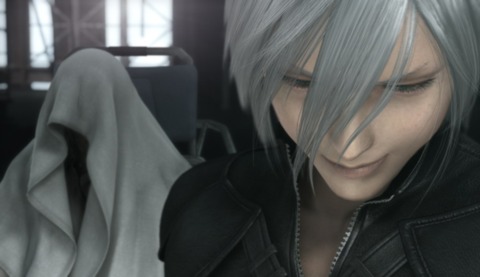 Like the not-quite-as-popular Final Fantasy: Spirits Within, the most impressive thing about Advent Children is its visual quality, which can be counted among the best computer-generated material we've seen to date. The details from scene to scene are thrilling, and if you think there's nothing else about the film worth watching, there's at least that. For fans, though, appeasement is a much more difficult task, and it's one that Square seems to have taken seriously. Their greatest challenge was translating the appearance of the beloved (and previously pixelated) characters into the highly detailed renders seen in Advent Children, adding nuances to the faces and clothes where there previously were none. Square has done a good job of fine-tuning the characters without impacting their overall presentation with the exception i Cloud, who now looks to be slightly influenced by Final Fantasy VIII's protagonist Squall, for better or for worse.
Like the not-quite-as-popular Final Fantasy: Spirits Within, the most impressive thing about Advent Children is its visual quality, which can be counted among the best computer-generated material we've seen to date. The details from scene to scene are thrilling, and if you think there's nothing else about the film worth watching, there's at least that. For fans, though, appeasement is a much more difficult task, and it's one that Square seems to have taken seriously. Their greatest challenge was translating the appearance of the beloved (and previously pixelated) characters into the highly detailed renders seen in Advent Children, adding nuances to the faces and clothes where there previously were none. Square has done a good job of fine-tuning the characters without impacting their overall presentation with the exception i Cloud, who now looks to be slightly influenced by Final Fantasy VIII's protagonist Squall, for better or for worse.
The sound production is almost as high quality as the graphics. The Japanese voice actors chosen to give life to the cast do a fairly good job, especially considering that the expectations for these previously mute characters were so high. If anything, the voices are slightly over-the-top, but presumably all will be changed for the English translation. As a result, it's difficult to judge what any of it will sound like for the North American and European releases. The music, though, is universal, and you'll be able to recognize many of the game's songs in their remixed states. The movie also effectively capitalizes on nostalgia by revisiting appropriate themes in accordance with what's going on.
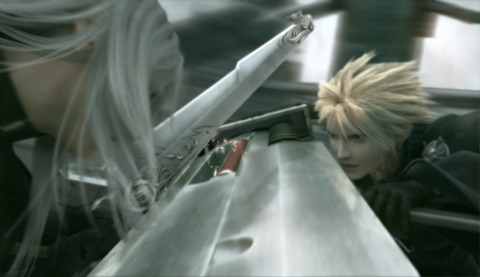 Of course, this is where the fine line between homage and obsession is crossed, which is ultimately the movie's greatest detriment. Subtle and infrequent references to the game would have been all Advent Children needed to recapture the hearts of the many Final Fantasy VII fans out there. Instead, viewers are treated to a fan-service buffet that will appeal to the greatest devotees of the game but will put off skeptics just as readily. At times it seems like no reference is left out, whether it be character guest appearances or even the postmodern nod to the fact that this movie's reference material was a game. It will be hard for the cynic to make it through the entire movie without an eye roll or two, which is a shame, because the quality is otherwise quite high.
Of course, this is where the fine line between homage and obsession is crossed, which is ultimately the movie's greatest detriment. Subtle and infrequent references to the game would have been all Advent Children needed to recapture the hearts of the many Final Fantasy VII fans out there. Instead, viewers are treated to a fan-service buffet that will appeal to the greatest devotees of the game but will put off skeptics just as readily. At times it seems like no reference is left out, whether it be character guest appearances or even the postmodern nod to the fact that this movie's reference material was a game. It will be hard for the cynic to make it through the entire movie without an eye roll or two, which is a shame, because the quality is otherwise quite high.
Advent Children improves upon the fighting mechanics of the game with impressively choreographed fight sequences. The camera angle is sometimes prone to cheesy cinema-style quick cuts, but the fighting is so well constructed that it's hard to fault the angle from which you must view them. Advent Children is around 100 minutes long and jam-packed with different types of action sequences. If you can get beyond the too-frequent and too-forced references, there's a lot to appreciate about the movie. However, it's quite obviously meant for those most endeared to the game, as others will be potentially put off by all the over-the-top fan service. Fortunately, no matter what your relationship is to the Final Fantasy franchise, the quality imbued here achieves a new landmark in CG filmmaking. Advent Children is the Final Fantasy movie that The Spirits Within should have been, and with any luck we'll be treated to more movies like it. But there doesn't necessarily even need to be a license attached.
The Other Games of Tokyo
By Carrie GouskosThe city of Tokyo is not only home to the Tokyo Game Show--one of the largest video-game-based trade shows in the world--but also to many other gaming outlets. From arcades to import shops, Tokyo is home to an extremely prolific gaming scene that seems to adopt a more front-and-center role than those of other cities. First-time visitors to Tokyo might arrive expecting a video game mecca, and in some respects, Tokyo is just that. In other respects, the games don't even begin to represent the full atmosphere of the city; they merely give it a flavor that happens to be particularly noticeable to those with video games on their radars. We took a day to look around the beautiful city, paying specific attention to the ways in which games are represented there.
Shinjuku
The vast city of Tokyo is divided up into different neighborhoods that are generally similar but that have different themes, of sorts. The fashionable Harajuku is considered the best place to go clothes shopping, for example. But Tokyo's districts have stores of all kinds, which is why we found a ton of game stores in the downtown administrative and commercial district of Shinjuku. Among the skyscrapers and sushi shops, we found two places to buy games and four arcades in the span of two blocks. Inside, these establishments had crowds as diverse as you can imagine. They included men and women, adults and children, the casually dressed and the formally attired. It seems, at least from the looks of the patrons of the arcades and game stores we visited in Shinjuku, that games don't belong exclusively to the male, 18- to 34-year-old demographic in Japan.
The game stores seemed to be divided into two categories depending on whether they sold new or used games. The biggest store we saw in the Shinjuku district sold new games--Yodobashi Camera, a five-story establishment that carried everything from toys to airsoft guns depending on which floor you were on. The ground floor looked very much like a game store in any other city, as the walls were lined with peripherals, magazines, and games for all different systems. But in one of the glass cases, for example, there were Dead or Alive body pillows for sale, gaming paraphernalia that was never sold outside of Japan. There was also an entire wall of games devoted to anime, and although other regions see some anime-based games, the number we saw in Tokyo absolutely dwarfs the numbers of any we've seen elsewhere. Aside from the anime section, the gaming choices looked surprisingly familiar. If you expect to go into a gaming shop to find rows upon rows of quirky Japanese-exclusive games like Yoshinoya, you're going to be in for disappointment. There were some to be found for sure, but the selection of games isn't grossly different from other regions. We picked up Earth Defense Force 2, a budget game for about $20, that features giant insects invading the major cities of the world. And on our journey to get Pop'n Music, a rhythm game that's in its 11th iteration on home consoles, we noticed that the latest version costs around $70, which is currently unheard of in the United States...unless the game is a special edition. Some of the latest DS and PSP games were pushing prices of up to $50, so we decided to head on over to a used store so we could spread our money out a little longer.

Akihabara
Although most of Tokyo's districts offer game stores of all types, there are none that compare to Akihabara, aka Electric Town. If there truly is a gaming mecca in Japan, it's here--where you'll find more electronics and game shops than restaurants and convenience stores. The used game stores aren't much different from the new game stores except in price and selection. For the modern consoles, you'll be hard-pressed to find a practical difference between used and new copies of games. Every single used game comes in a box with a manual, and when we picked up a used PocketStation, the Japanese exclusive "VMU" for the PlayStation 2, we found everything for the system was packaged in, including the original stickers and the tiny (and very losable) screwdriver that you use to take it apart. Of course, many of the cartridge-based games had saves on them still, but as long as you can figure out how to erase old save data, they're otherwise as good as new.
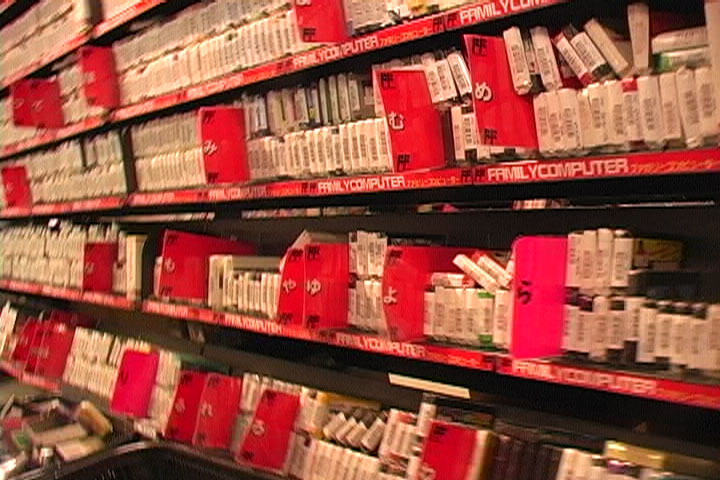
Of course, the real gem of the used game stores is the collection of classic games available. And even though there are game stores everywhere, the better ones are still the ones tucked away in alleys, like Super Potato, a store that would otherwise be indistinguishable if it weren't for the distinct sound of Nintendo music coming out of the second-story window. Super Potato's selection of old games is extraordinary. One wall is covered with just systems, including the original Famicom, the Famicom twin, Neo-Geos of all shapes and sizes, and more. The systems look like they've been maintained with the utmost care, as they're all well-wrapped, fully accessorized, and clean. By the looks of it, the rows of shelves of games for these systems might contain every release for the systems. You'd certainly have a hard time playing through all the Famicom games you'd find there. You don't get something for nothing, though, because generally the classic games and systems are a little more expensive than you'd find from their North American counterparts. The Famicom is around $70, and the NES could probably be bought for around $40 in the States. However, the selection is so complete and well taken care of--and some of the systems are so much more difficult to come by--that all the prices seem reasonable in this context.
Arcades
The social element of gaming in Japan is very much alive, given the sheer number of public arcades that line the city streets. The theme--at least the most noticeable one--is rhythm games, and each arcade had the same few rhythm machines located near the front of the store to draw consumers in. This includes Taiko (the bongo drum game), which is pretty much a grown-up version of Donkey Konga, except you use drumsticks instead of your hands and can play two-player at every arcade machine. Pop'n Music and BeatMania are also enormously prolific, and both games enable you to hit buttons on the machine that correspond to different-colored bubbles that scroll down the screen, much like a Dance Dance Revolution for your hands. DrumMania and Guitar Freaks are rhythm games with drum kit and guitar peripherals, respectively, that enable the same kinds of mechanics as all the other rhythm games, though they merely switch the method by which you play. Each game costs around 200 yen (under $2) for one play, and you generally get through four or five songs, depending on if you're good enough to complete them all.
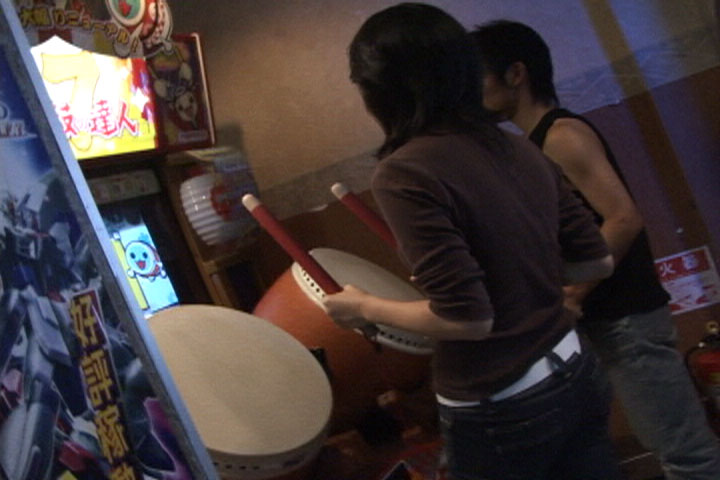
Although the rhythm games take up the front of the arcades, there are a ton of other game types deep inside them. On a trip to Club Sega, we took a walk around the basement floor, which hosted "Versus City," the arcade's fighting game room. It was surprising to see the sheer number of men in suits sitting down, having a smoke, and busting out a few games of Virtua Fighter, Tekken, Street Fighter, or less-well-known Japanese fighters, like Melty Blood. There also seemed to be a fairly devoted scene to a soccer card game that combined arcade gameplay with card-deck collection, although all our attempts to purchase and play these games proved to be fruitless.
For avid fans of video games, Tokyo sure is the catalyst for destroying your wallet, especially if you take into account the amount of money you'll have to spend importing games for your Japanese systems once you leave the country. Although the task of uncovering the best and most unique Japanese games isn't the easiest one, with the proper research--and given the accessibility of games--you could spend quite a long time getting down and dirty with the games of Tokyo.
Phones in Japan Are So Cool
By Steve PalleyIf you've been following our mobile games coverage from the Tokyo Game Show this year, you've probably noticed our reluctance to definitively state whether we're going to see many of these games in the States. There's a good reason for that, above and beyond the usual uncertainty that surrounds foreign games that could potentially be imported. Specifically, we in the United States are missing two very important ingredients. And without them, advanced mobile games like Monster Hunter i and Code Age Brawls simply can't work. The Japanese enjoy the world's coolest cellular phones, as well as the fastest and most data-heavy mobile network ever built.
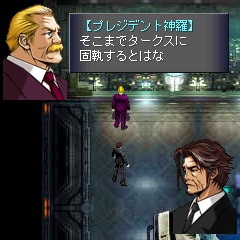 We agree that all this sounds pretty outrageous. But if you've ever had a chance to visit Japan, you'll witness firsthand the vital role mobile technology plays in urban Japanese culture--especially in Tokyo. Many Westerners are astounded by the size of the city, as it can take several full hours to commute from one end of the metropolis to the other, whether by train, bus, or even car. The long commuting times, coupled with the strong social taboo against using a mobile phone to hold a conversation in public (there are actual signs posted on trains forbidding public blabbing), create the perfect environment for mobile entertainment consumption. And that's exactly where NTT DoCoMo has stepped in.
We agree that all this sounds pretty outrageous. But if you've ever had a chance to visit Japan, you'll witness firsthand the vital role mobile technology plays in urban Japanese culture--especially in Tokyo. Many Westerners are astounded by the size of the city, as it can take several full hours to commute from one end of the metropolis to the other, whether by train, bus, or even car. The long commuting times, coupled with the strong social taboo against using a mobile phone to hold a conversation in public (there are actual signs posted on trains forbidding public blabbing), create the perfect environment for mobile entertainment consumption. And that's exactly where NTT DoCoMo has stepped in.
NTT DoCoMo is Japan's largest cellular carrier. It also happens to run the i-Mode mobile data service, which was founded in 1999 and immediately became the industry's de facto gold standard. i-Mode services a little more than 40 million people in Japan, who pay an additional monthly fee for access to its enormous content catalog. On top of that, NTT DoCoMo's FOMA network has supported broadband data-transfer rates since late 2001. By comparison, Verizon Wireless deployed similar technology at the beginning of 2005 when it launched its V Cast service.
Most of the mobile games we sampled at TGS were on advanced FOMA handsets, which are mostly manufactured by Fujitsu. Since these phones are specifically designed for use with i-Mode, they're not available in the US...and they wouldn't work here even if you were to import them. The technology gap between FOMA phones and our best handsets is narrowing, but it's still reasonable to say that FOMA technology is about a year ahead of anything we can buy at the moment here.
These phones have faster processors, larger and sharper QVGA screens, more features onboard, more storage memory, and much-more-flexible architecture. Most of the features on phones that are sold in the United States are blocked off from one another, so it's impossible to make camera games work, for example. FOMA handsets, on the other hand, have some pretty wicked games that make use of the onboard camera (like Real: Another Edition). It's even possible to buy games and other products by simply taking a picture of a 2D bar code. The phone will process the image and automatically link you to the attached download.
Got a news tip or want to contact us directly? Email news@gamespot.com

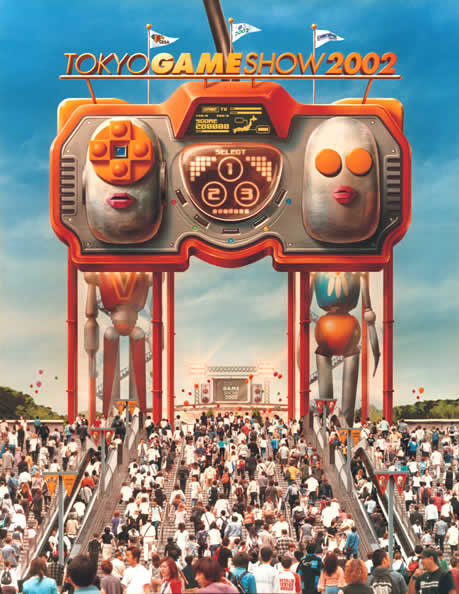
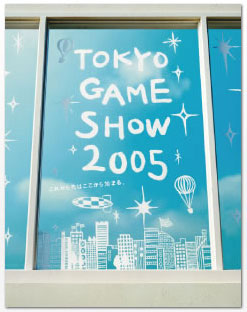

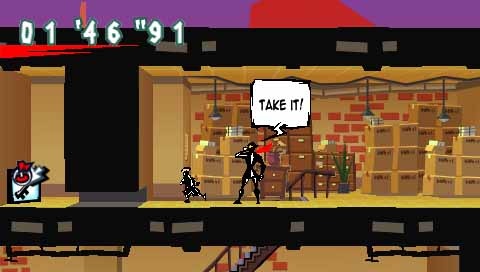
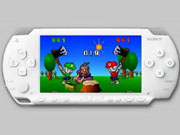
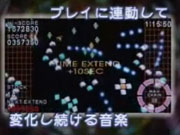
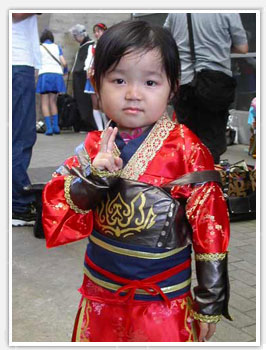
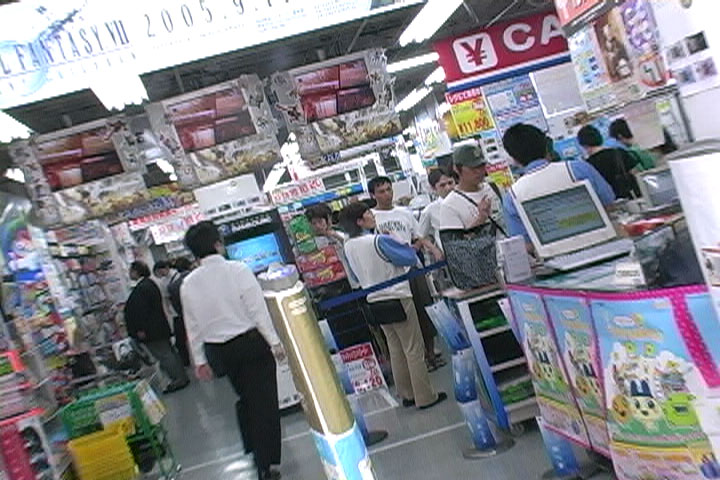
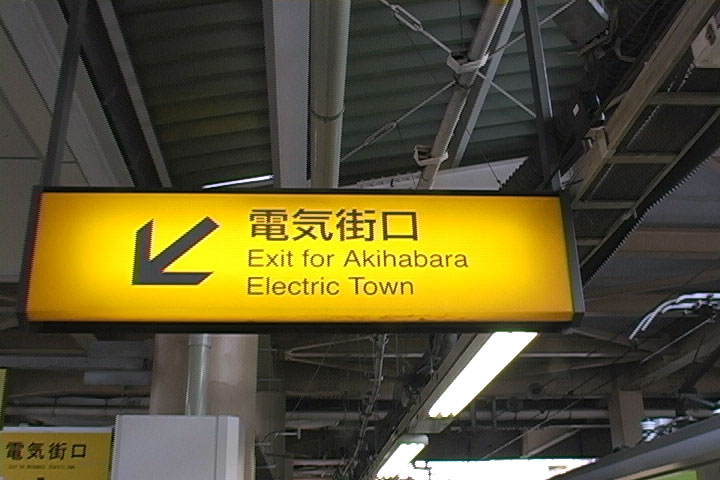
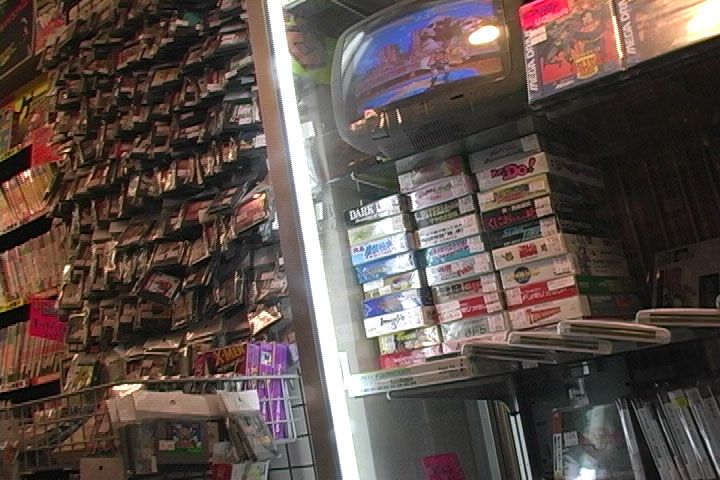
Join the conversation